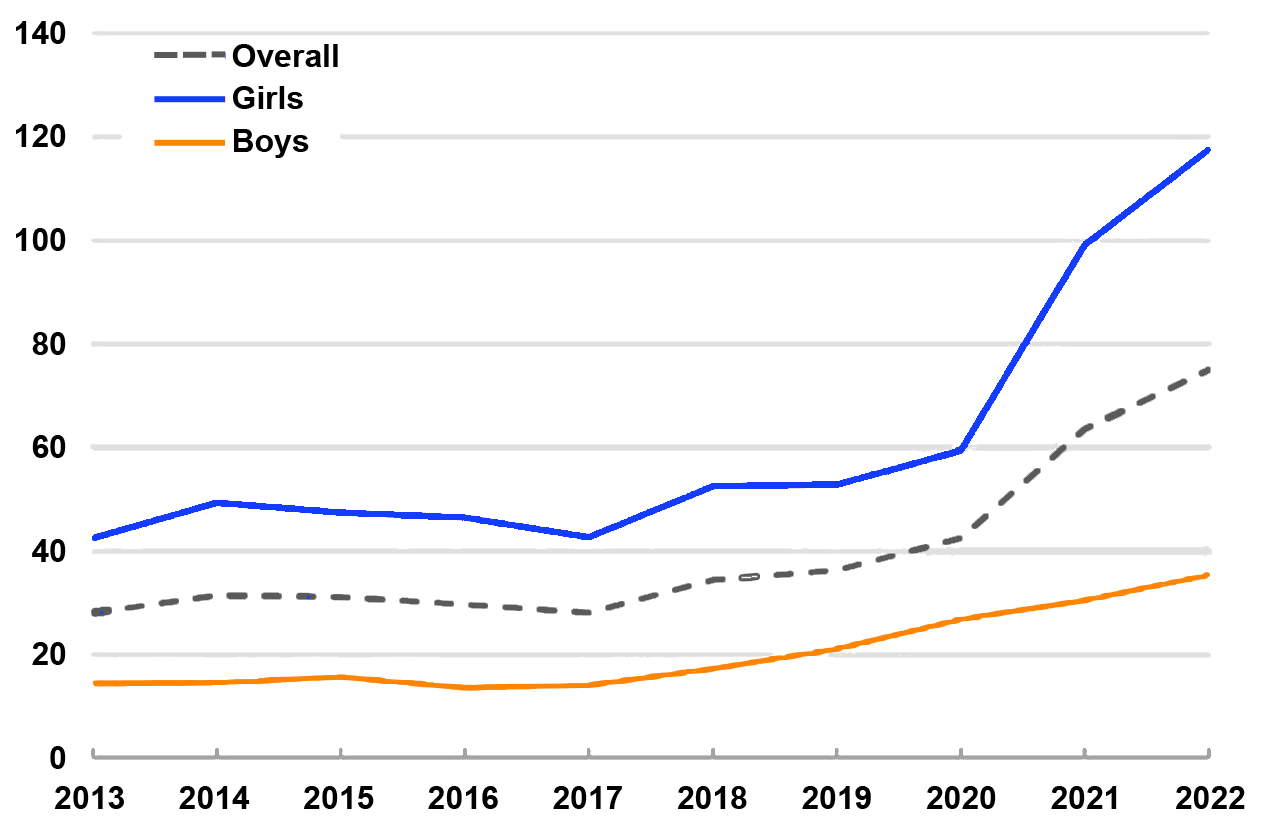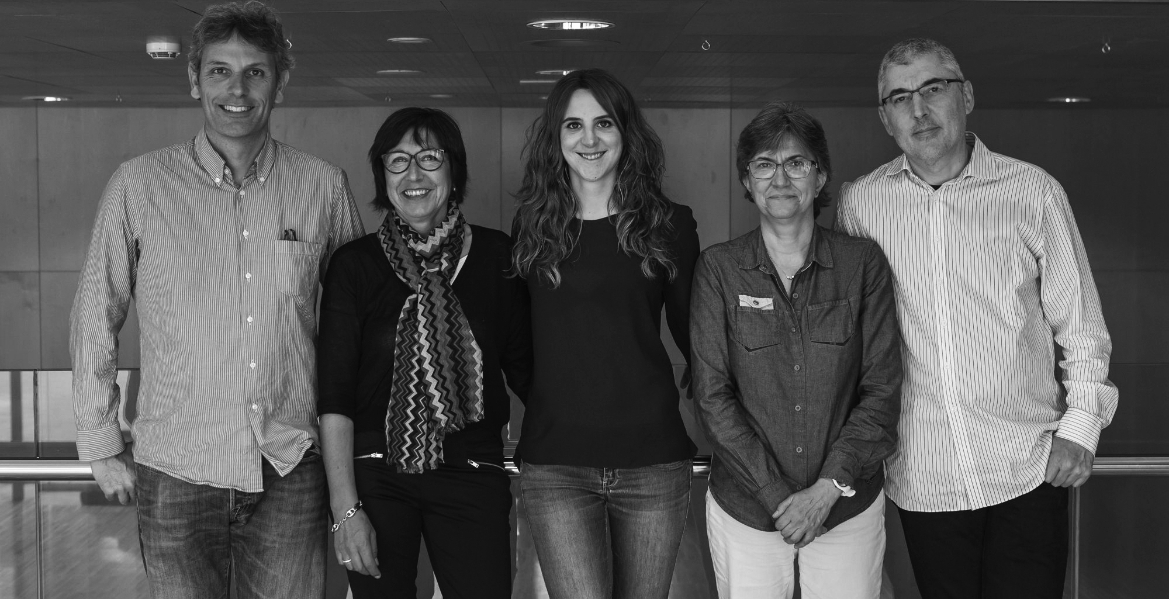
Cases of self-harm among people aged 10 to 24 increased by 267% between 2013 and 2022, according to a study coordinated by researchers from the Jordi Gol Primary Care Research Institute (IDIAPJGol), Constanza Jacques Aviñó and Enric Aragonès. The study, recently published in the journal European Child and Adolescent Psychiatry, highlights that incidence was three times higher among girls than boys, and particularly elevated during the pandemic: between 2019 and 2022 alone, the number of self-harm cases rose by 206% in this age group.
Throughout the analysed period, self-harm cases remained stable in both sexes and across all age groups until 2017. At that point, a slight increase began, which continued steadily until 2020, coinciding with the onset of the covid-19 pandemic, when the number of recorded cases rose sharply.
Significant increase among 10 to 14-year-olds
The research identifies three age groups: 10 to 14, 15 to 18 and 19 to 24. In 2022, the highest incidence among girls was in the 14 to 18 age group, and among boys, in the 19 to 24 group. Although the youngest group has the lowest incidence levels, it is the one that experienced the largest increase during the pandemic: by 2022, incidence in this group was nearly four times higher than in 2019, in both sexes.
The study shows that socioeconomic deprivation is a key factor in self-harm incidence, with higher rates among adolescents from disadvantaged backgrounds. This increase was particularly noticeable from the covid-19 pandemic onwards, which exacerbated these inequalities—likely because families with fewer resources were more severely affected by lockdown and financial difficulties, which increased the risk of psychological distress and self-harm.
SIDIAP data
The study is based on data from more than 1.7 million individuals registered in the Information System for Research Development in Primary Care (SIDIAP), which collects clinical information for 80% of people receiving primary care in Catalonia. From all the analysed records, the research team identified 3,587 individuals who had self-harmed at least once, of whom 73.8% were girls and 26.2% boys. More than 9% of individuals reported more than one episode.
Six out of ten young people who had self-inflicted injuries had been diagnosed with a mental disorder, mainly anxiety (43.6% of girls and 35.7% of boys) and depression (15.8% of girls and 11.9% of boys).
IDIAPJGol researcher Enric Aragonès, first author of the article, stresses that “this study highlights the need to strengthen interventions in the field of youth mental health, particularly in prevention and early detection.” Dr Aragonès acknowledges that it will be necessary to study the evolution of self-harm incidence among adolescents and young people after 2022 in order to assess the long-term impact of the pandemic on this highly vulnerable population group.
This article is part of the study Mental health in adolescents and young people in Catalonia from a gender perspective: A population-based and participatory qualitative study (PI22/01278), funded by the Health Research Fund (FIS) of the Carlos III Health Institute. The study evaluates the evolution of mental health among adolescents and young people from a gender and inequality perspective, combining quantitative and qualitative methods, as well as the direct participation of young people throughout the research process.
Article reference
Aragonès E, Lozano-Sánchez A, López-Jiménez T, Bennett M, Evangelidou S, Francisco E, García M, Malgosa E, Codern-Bové N, Guzmán-Molina C, Jacques-Aviñó C. Incidence trends and clinical management of self-harm in adolescents and young adults in catalonia: primary care cohort study (2013-2022). Eur Child Adolesc Psychiatry. 2025 Aug 30. doi: 10.1007/s00787-025-02840-4. Epub ahead of print. PMID: 40884581.
